Do you scratch your head when someone asks you if you have an “IoT strategy”? I do, and I find myself inevitably asking what one means by “IoT strategy”. Why is the Internet of Things (a.k.a. “IoT”) such a confusing thing for many of us?
According to a 2016 Gartner study, 43 percent of enterprises were looking to do something with the Internet of Things. According to numerous studies, most notably one conducted by Cisco in 2017, enterprises that have or are in the process of implementing IoT for their business are experiencing low rates of success with anywhere from 60 to 73 percent of projects failing. What is going on here? Are companies just not that good at this thing we call IoT? Were stakeholder expectations not managed well? Communication breakdown between techies and their business counterparts? Maybe people just don’t know what IoT is in a way that matters for the business.
The Internet of Conceptual & Semantic Disconnects
The term “Internet of Things” is itself the source of confusion. Much like Cloud, there is an infinite number of ways to classify, segment and view the rapidly expanding IoT universe. Making matters worse, the idea of the “Internet of Things” is constantly morphing and presents a conceptual moving target for all of us. For these reasons, we quite often talk past each other with different conceptions and definitions of IoT. Introducing IoT dilemma number one.
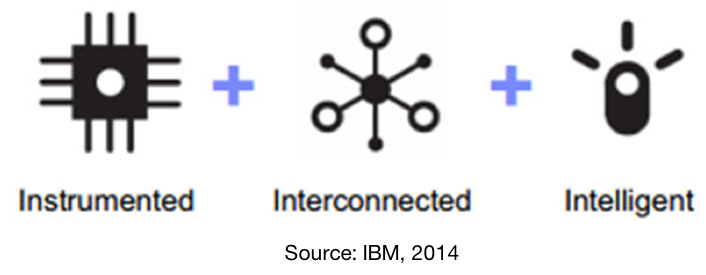
Nothing New, Just Better and Cheaper!
Connected, sensing and intelligent things are nothing new. Ask the CTO of an oil and gas company. The Internet of Things merely represents what seems to be an ever-expanding landscape of device types, technologies and architectures that have been around for quite some time in manufacturing, logistics and transportation and the aforementioned oil and gas industry. One day, someone decided to call these networks of connected, sensing and smart things the “Internet of Things”. Thus, the confusion was born. But it didn’t stop there. Try the “Internet of Everything” on for size – the Internet of People + the Internet of Things; all-encompassing and quintessentially nebulous at the same time. So, how do you get past the buzzwords and hype to arrive at something meaningful and valuable for you, your company and your customers? IoT dilemma number two.
It’s About Economics, Genius!
The Internet of Things is like the Force. It has been around for a while though we might not have been aware of it. It surrounds us and binds little devices together into performing some great collective/aggregated functions such as condition monitoring to deliver business value in the form of asset optimization. The key difference today versus yesterday is that the economics of solutions/applications based on these IoT-associated (a.k.a. digital) technologies continue to improve making them more accessible, affordable and viable for a wider range of industrial, commercial and consumer applications. Thanks to Moore’s Law, these technologies continue to improve in capability, function and performance. The economics of these IoT-associated technologies are being driven by the following mega tech forces that have been shaping the ICT landscape for decades.
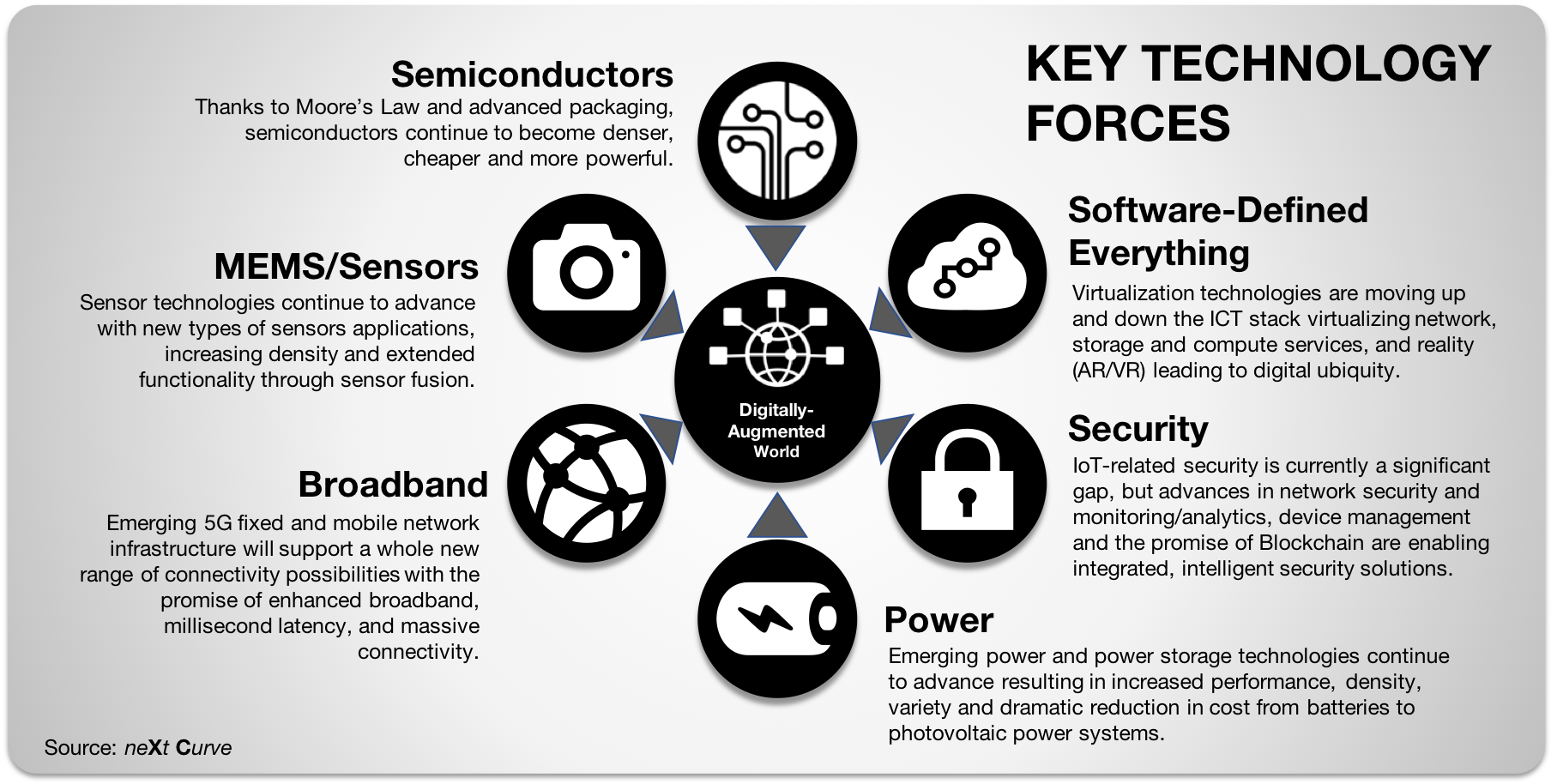
It’s About The Applications!
The best way to develop an IoT strategy is to not talk about IoT. Strike it from your vocabulary and forget about it otherwise you will spend endless hours if not weeks debating with your business folks, your tech folks, your IoT partners and consultants in what may end up being a fruitless effort to arrive at semantic and conceptual consensus within and outside your organization. Rather, focus on the application; the business application. The technical design and applications follow and should be informed by what you are trying to do in realizing business value through applied digital technologies (cloud, 5G, mobile, artificial intelligence, etc.).
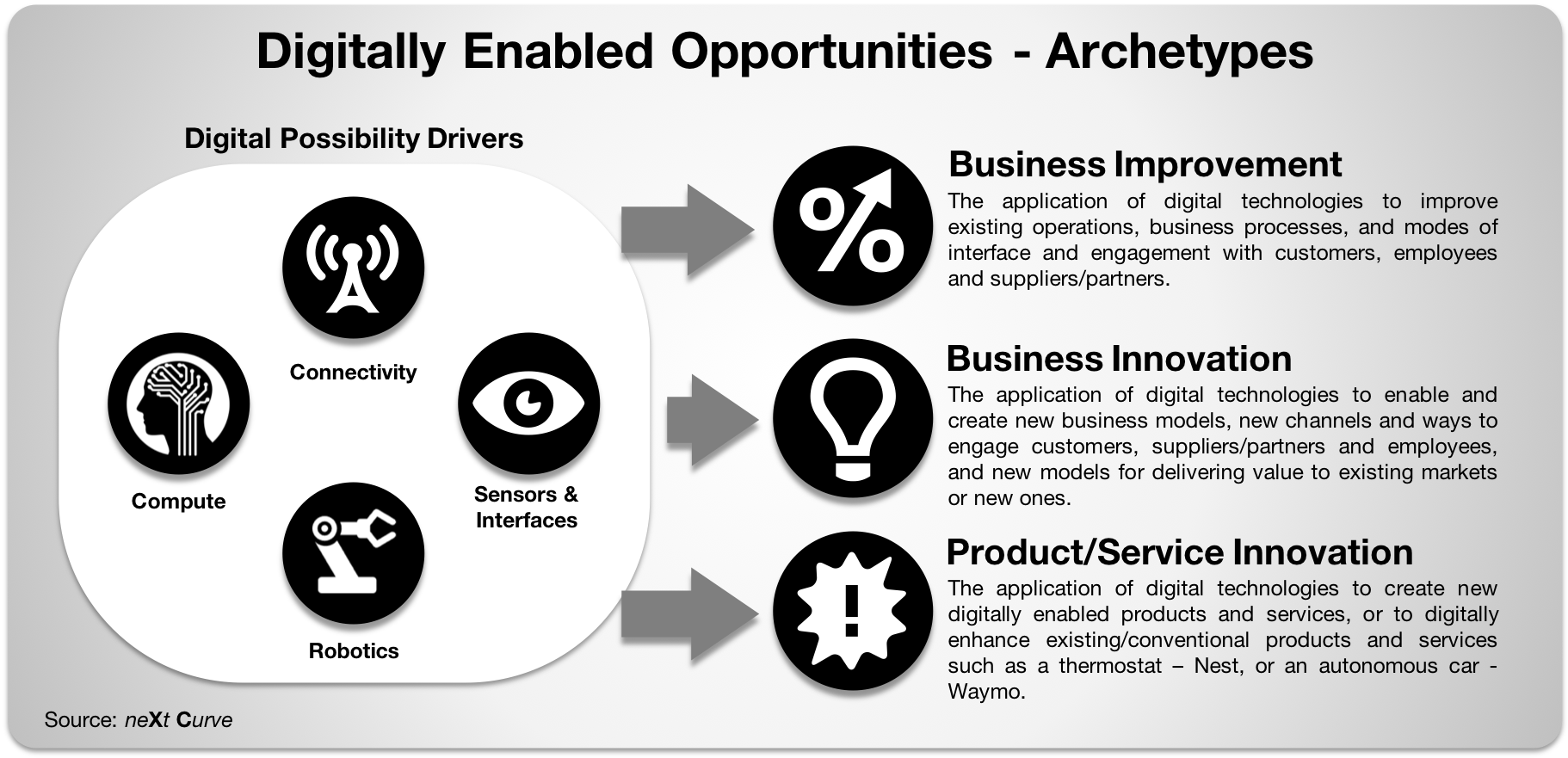
Where do you start? Well, that depends on what you are trying to do. Are you trying to solve operational issues with your current business? Are you looking to build digitally-enabled capabilities that will yield competitive advantage? Are you digitally-augmenting a new or existing product or service? Or are you trying to create a net new business or a digitally-augmented derivation that will change the competitive dynamic of your market and industry? Your answer will dictate the path that you need to take to business value.
As you explore the digitally-enabled possibilities of your objective, consider the frontier of possibilities presented by the digital possibility drivers – connectivity, compute, sensors & interfaces and robotics. Yes, robotics. Why? Because once we have visibility and insight into physical context, we are going to want to actuate a physical response in a digitally-augmented reality.
What is Old is New
If your objective is to improve or fix problems with your current business, the world of operational technology (a.k.a. OT) provides some great examples of patterns for applying digital technologies in driving value for the operations of a business. In particular, the oil and gas industry has historically invested heavily in IoT-associated technologies and has decades of experience applying these technologies to improve every aspect of their upstream, midstream and downstream businesses. While this is good news, proceed with caution. Unless you are looking at a well-established industry application that fully matches your requirements, you will need to adapt any precedent solution pattern to the specifics of your business or industry.
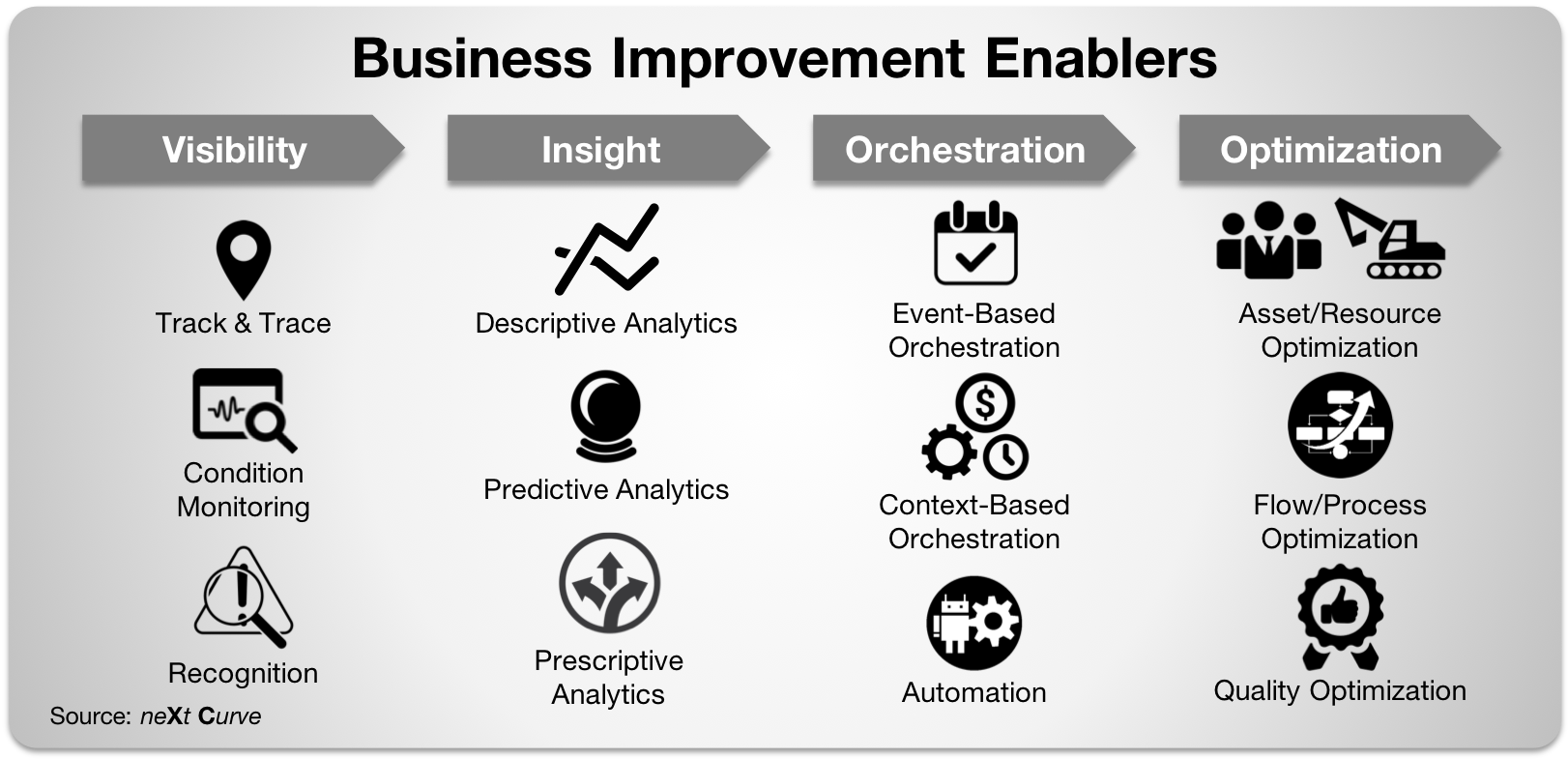
As you embark on your digital augmentation journey, your enterprise will follow an evolutionary path that starts with the development of capabilities that enhance visibility to your business. You will then progresses to a phase where the data (unstructured and structure) captured can be analyzed and used to model and simulate physical environments and objects via digital proxies (what Gartner calls “Digital Twins”). You can then use these insights to integrate and automate your operations in increasingly granular, context-driven ways. Once your enterprise has established a mature, closed-loop of visibility, insight and orchestration, it will have the data and insights to institute various optimizations of operations, assets and outcomes.
We are at the cusp of another inflection point in our digital augmentation continuum. As robotics goes mainstream and the artificial intelligence conversation evolves into something practical and less fearful, we will enter a new phase of automation and optimization that is cyberphysically closed-looped. We will go from sensing, gathering and analyzing data to digital and physical actuation in response to events administered by algorithms and learning systems. Beyond this, we can look forward to mixed reality as emerging human interfaces blend digital into our physical world. We are seeing this happening in telecommunications and data center networks where artificial intelligence is now being applied to realize learning, self-healing and self-optimizing systems.
What is New is Undiscovered Country
Innovation lies in the undiscovered country that is the future. Emerging and evolving digital technologies present businesses in industries such as retail, hospitality and travel with a fast-expanding field of opportunities to create and deliver first-of-a-kind consumer-facing experiences, and to digitally augment and reinvent legacy experiences. A great recent example is Amazon Go. In January 2018, Amazon opened its first Amazon Go store which provides a new self-service retail paradigm enabled by the innovative application of computer vision to track people and SKUs, mobile short-range communications for authentication and location tracking, and integration with Amazon’s eCommerce platform. Amazon Go represents a retail channel and customer experience model that is new for Amazon as they continue their foray into brick n’ mortar retail. It is also a significant piloting of the next phase of self-service physical retail. See Akshay Sharma’s article “Retail 2.0: The Future of Retail”.
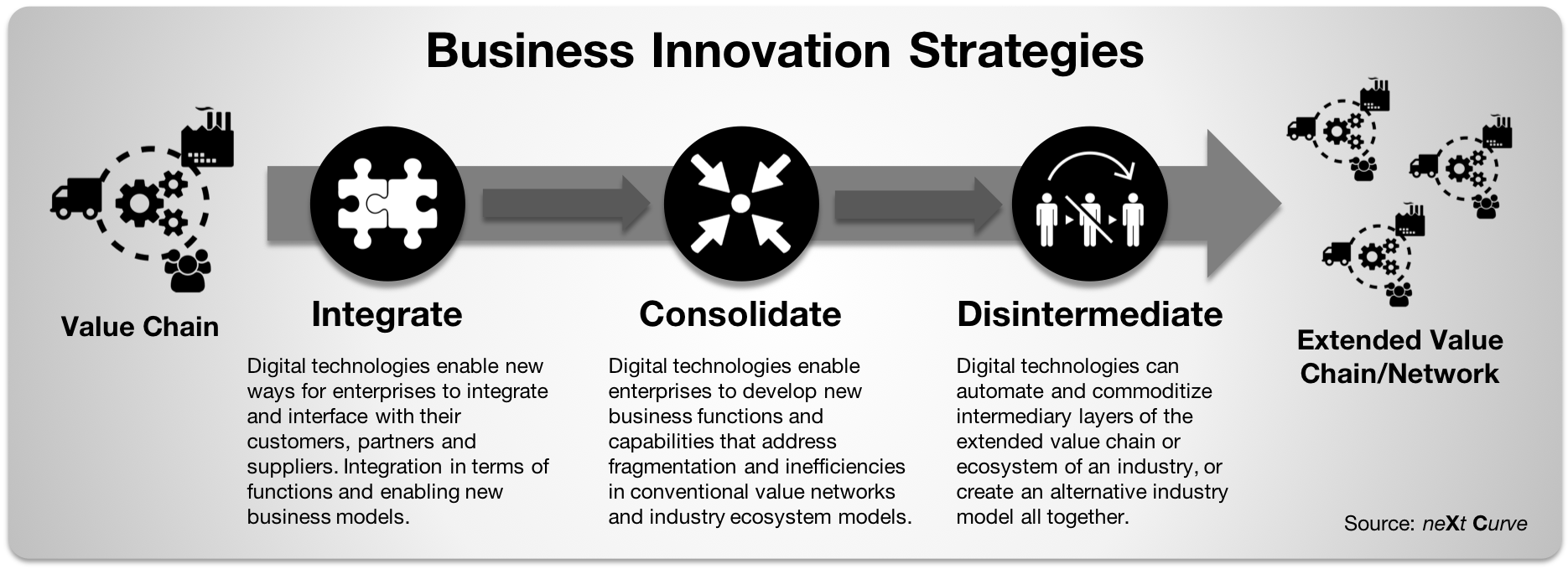
Digital technologies can provide a constant stream of possibilities for enabling a wide range of business model innovations that can yield competitively differentiated capabilities and new revenue opportunities for businesses. Digital technologies can also foster unique mechanisms for value creation that shift the conventional value chain of an industry. Business innovations can be sourced from digitally-enabled capabilities that help an enterprise interface with ecosystem players in new ways that garner efficiency, speed, flexibility and cost-effectiveness – convenience. Think online shopping and the aforementioned Amazon Go store.
Digital technologies are making it easier for businesses to aggregate a rapidly expanding vocabulary of data and information about almost anything and everything, which can be monetized through revenue models such as advertising a la Facebook. These technologies are also enabling new operating models and processes that position a business as a functional hub, such as a digital marketplace or social/commercial network, within the context of their industry or a new/emerging market. AirBnB and Uber are great examples of this kind of digitally-enabled business innovation that aggregates asset owners into a commercial network that provides participants with easy access to a global market of travelers/customers.
Finally, we have seen enterprises that have gained critical mass in their digital business platform begin to trim the intermediary fat out of extended value chains and industry models by integrating value network participants through automated processes and optimized commercial interactions. We have seen many of the online messaging OTT (over-the-top) players such as Whatsup, WeChat and Skype squeeze carriers out of the messaging game and crush their once coveted texting business and revenues.
The Value Mesh: The New Frontier
Digital technologies are blurring the lines between the physical and the virtual. They are also enabling physical and digital value to be interlaced with each other creating synthetic possibilities that can be truly transformational for consumers, businesses, industries, governments and humanity. Digital technologies are also forcing businesses to think differently about the products and services that they offer while opening up a seemingly limitless expanse of opportunities for inventors who are seeking to create the net new and the revolutionary.
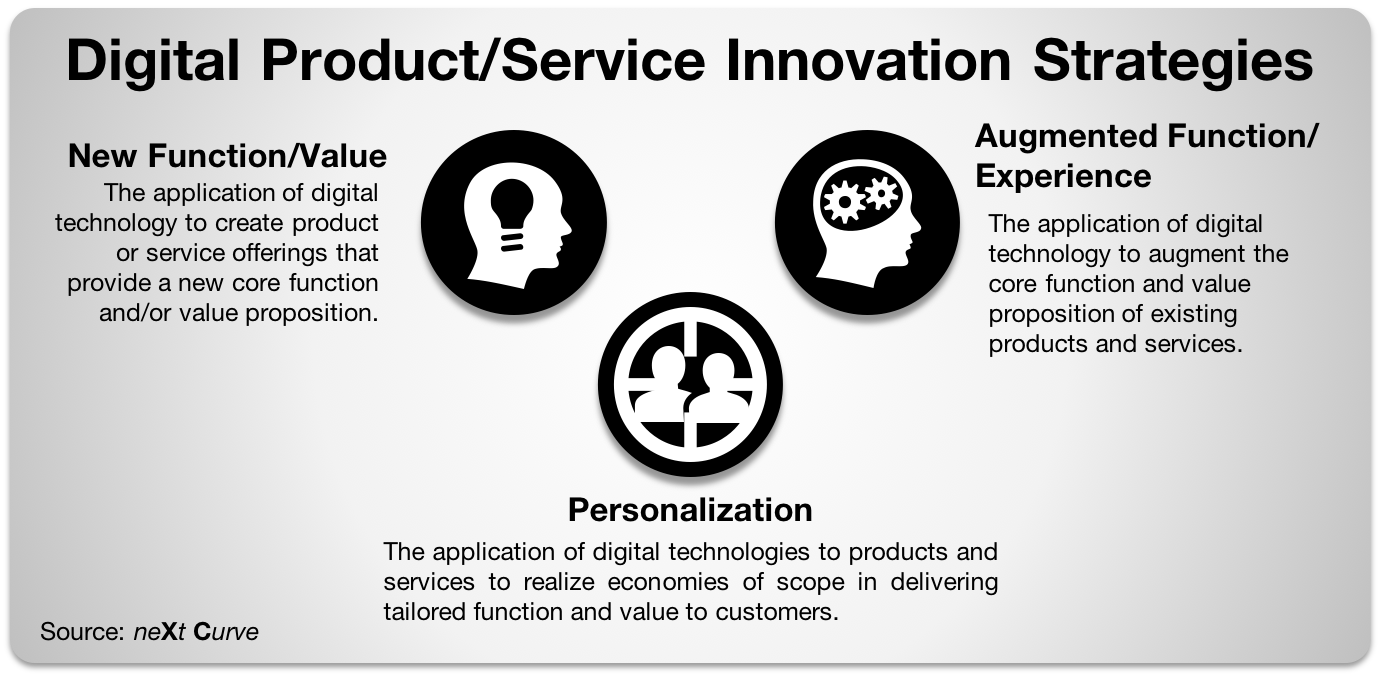
Businesses can use a blend of three strategies to evolve their existing portfolio of offerings or to create something that the world has never seen before.
- New Function/Value – This innovation strategy targets the creation of a new product or service and focuses on the intersect of cyber and physical product/solution design, which is essentially system design that integrates hardware, software and experience engineering. A great example is the VPA (Virtual Personal Assistant) represented by the likes of Siri, Cortana, Alexa and Google Assistant. Apple was the first to introduce the VPA with Siri in the iPhone 4S back in 2012, which was a product enabled by natural language processing (NLP) and conversational A.I, and designed with a user experience nugget: humor.
- Augmented Function/Experience – This digital innovation strategy seeks to apply digital technologies to functionally augment existing products and services in order to enhance usability, engagement and to deliver a new and competitively differentiated experience of something familiar. The scope of the strategy could be as narrow as the core product or service, or as expansive as all the channels and interfaces that a customer has throughout the full cycle of engagement with a product or service. A great example is Samsung’s Family Hub which transforms a refrigerator into a digital hub that is not only able to help you manage your grocery inventory but is also a smart home control center and a social nexus for your family. Smartphone meets the fridge meets Facebook.
- Personalization – This innovation strategy seeks to apply digital technologies to dynamically tailor the experience and the utility of a product or service to the specifics of a customer based on context and preferences. A great example of the application of this innovation strategy is what Facebook has done for advertisers through its ad platform which delivers highly-targeted, personalized ads to consumers using the Facebook social network via a wide range of consumer endpoint devices such as the smartphone and PC.
Do You Need an IoT Strategy?
Not really. It’s more important to have a continuous strategy to improve and evolve the way that your business delivers value to customers and society, whether through operational excellence or offering a compelling new service or experience. Technology only provides a dynamically shifting landscape of possibilities and opportunities to innovate and improve your business model, products and services, customer experiences and your industry. At the end of the day, you will not be able to define value in terms of “IoT”, so why bother having an IoT strategy? This is not to say that technology should not be an important part of your business strategy for digitally-enabled business reinvention and improvement. It absolutely should inform your debates and decisions as you work together with your team and stakeholders in reimagining your business and the value it delivers to your customers current and yet to be discovered.
Implications for Business Leaders
Business leaders should get informed on what IoT is and isn’t so that they can effectively moderate a grounded, meaningful dialogue within their organization about how digital technologies present new possibilities for their business to reinvent itself or create entirely new value. Ditch the term as soon as you can as you quickly transition to meaningful business innovation themes that should guide and drive the continuous reinvention of your business.
Business leaders should put in place a program to continuously renew their business strategy to consider the progression of critical digital technologies and the performance/economic tipping points and convergences that present high-value opportunities for business improvement and innovation.
Business leaders need to pay particular attention to IT security (including cybersecurity). The risks and the liabilities grow and proliferate as you start to hand the reins of your business to machines, and skyrocket when you start to capitalize on personal data of consumers.
Privacy becomes a growing risk and barrier, especially as GDPR sets a reference case for individual privacy protection and ownership. Take Meltdown and Spectre very seriously. Make sure you have a risk mitigation strategy and that your vendors are remediating their products and services.
Contact us if you would like to discuss how neXt Curve can help you explore digitally-enabled possibilities for your business.
Related Content & Media
- Industrial IoT: Shaping The Future of IoT – Part 1
- Industrial IoT: Shaping The Future of IoT – Part 2
- Industrial IoT: Shaping The Future of IoT – Part 3
- Internet of Things World 2018 Key Takeaways
by Leonard Lee
Managing Director, neXt Curve
March 15, 2018
© 2018 neXt Curve. All rights reserved.
10 comments